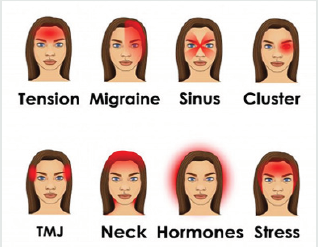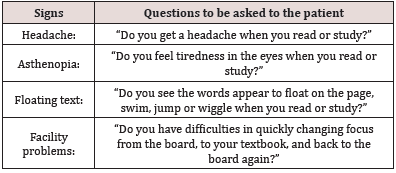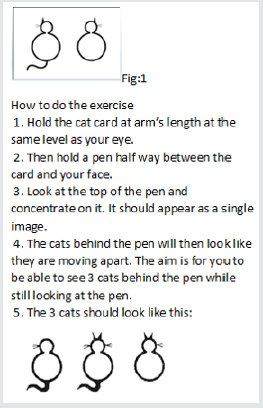Lupine Publishers| Journal of Ophthalmology
Opinion
Headache is probably the commonest neurological complaint worldwide. According to the World Health Organization (WHO), 1.7-4% of the adult population of the world have headaches on 15 or more days every month. Sometimes these symptoms are misunderstood and confused with Migraine Attacks or with normal tension headaches. It is also one of the commonest problems because of which people come for a glass/eye check-up. Very often the belief is that a change of eye power is the reason for headaches. Students who constantly keep reading books or keep doing their academic exercises have more chances to suffer from eye related problems like Eye strain, Fatigue, Eye pain, Headache etc. When a patient comes to you with complaints like headache after some continuous reading it is important to be able to distinguish if it is related to the eyes or not. Headache can be felt in a variety of places on the head, including the temples, sinuses, forehead and back of the head. Eye pain associated with a headache can be caused by a few different types of headaches, as well as other seemingly unrelated conditions. But regardless of the cause, this type of pain can be mild, moderate, or even unbearable
Figure.

Figure.

Relation to the Eyes
Ask These Questions to your Patient if they have Complaints Related to Headache (Table 1)
There are many diseases related to the eyes which can cause headache. But there are also some types of muscle imbalances which commonly occurs in young age. Let us discuss about the common causes of headache related to eye which occurs mainly in young adults.
Uncorrected/Under corrected/Over corrected Refractive Error: The prevalence of Refractive error in young adults has increased in past few years [1], it is extremely important to perform the visual acuity test and retinoscopy before going to any other conclusion for the cause. As we all know, the visual acuity of the patient might be 20/20 even when there is manifest hyperopia or small amount of astigmatism is present. All young patient mandatorily undergo cycloplegic refraction regardless of their refractive status or visual acuity. Cycloplegic refraction gives the accurate amount of refractive status of the eye. Be it emmetropia or any types of ammetropia [1].
Convergence Insufficiency (CI): It is one of the most common cause of headache in young adults. It is an eye problem where eyes tend to drift outwards when reading or doing any close work. If this drifting happens it leads to double vision. To prevent the double vision, eyes must work extra hard to turn the eyes back in and this leads to all kinds of asthenopic symptoms like headache, eye pain etc.
Figure.

• Treatment: One of the common treatments of CI is pencil push-up exercise and cat card exercise (Figure 1)
Accommodative Spasm (AS): It is another common cause of headache in young adults. Due to continuous viewing/reading near objects, especially associated with stressful situations, the ciliary muscles remain in the condition of contraction. This causes headache and transient blurry vision for distance due to pseudomyopia [2]. Advising the patient to avoid near work for some time and do some stress relieving exercises can help.
Treatment: There are various exercises & therapy treatments for the AS. Better consult an orthoptist/vision therapist’s clinic for the treatments of these kind of problems.
Accommodative Insufficiency (AI): It is characterized by an inability to focus or sustain focus at near, demonstrated clinically by an insufficient amplitude of accommodation based on age. Children with poor general health are more prone to this condition.
Treatments: Hart Chart (Figure 2) will help and even cat card (Figure 1).
Read More about Lupine Publishers Journal of Ophthalmology Please Click on below Link: https://ophthalmology-lupine-publishers.blogspot.com/



No comments:
Post a Comment
Note: only a member of this blog may post a comment.